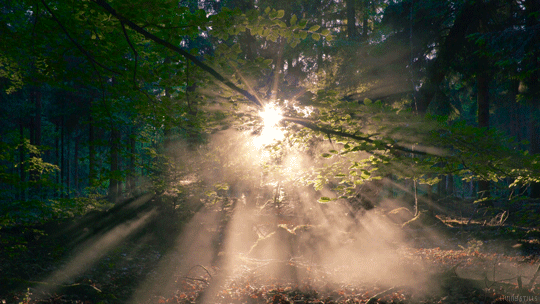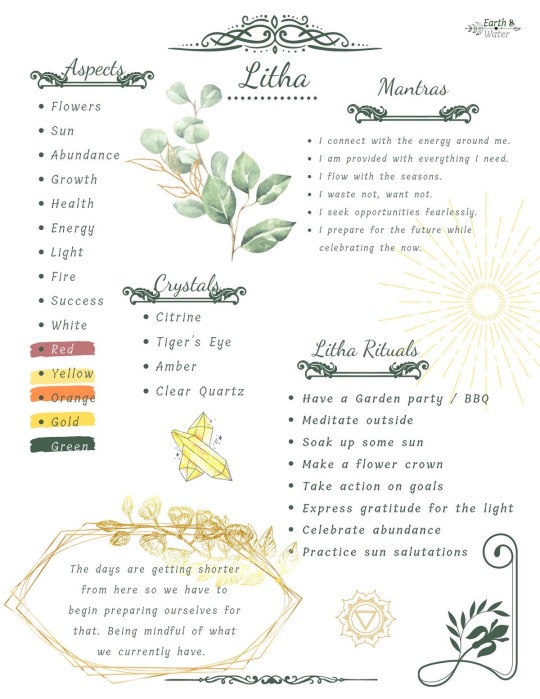🧿🜁🜄🜂🜃“We are the granddaughters of the witches they couldn’t burn”18+ only. This blog serves as a personal online grimoire. All posts are subjective specifically to the blog owner. Please do your own fact checking and research before attempting anything from this page.
Last active 60 minutes ago
Don't wanna be here? Send us removal request.
Text
Common Cleaning Oils
Eucalyptus
Mundane use: air freshener, kills household germs
Magical use: healing, brings in fresh energy, purification, new beginnings
Lavender
Mundane use: antibacterial, fragrant
Magical use: protection, peace, sleep, purification, love/self-love
Lemon
Mundane use: antibacterial, antiviral, air freshener, degreaser
Magical use: cleansing, removing blockages, purifying, spiritual opening
Lime
Mundane use: antiviral, antiseptic, antibacterial, air freshener
Magical use: purification, joy, happiness, tranquility
Peppermint
Mundane use: antibacterial, repellent, air freshener
Magical use: protection, repelling unwanted energies, healing, peace
Pine
Mundane use: kills household germs and yeast spores
Magical use: purification, abundance, success, new opportunities, repelling negativity
Rosemary
Mundane use: antiseptic, antibacterial, bug repellent, air freshener
Magical use: protection, purification, memory, learning
Source: Hearth and Home Witchcraft: Rituals and Recipes to Nourish Home and Spirit by Jennie Blonde
190 notes
·
View notes
Text
Grimoire - Herbalism

Magical Powder Recipes Stinging Nettle The magic of roses herbal preparation types Herbal Glossary Types of herbal remedies From infusions and tinctures to oils and salves Drying and harvesting herbs Orange/Tangerine How to correspondence: food & herbs Easy Negative Energy Absorption Using Herbs in Witchcraft Chinese folk magic: PEACHES Seeds in Witchcraft Ash of Roses How to Dehydrate Herbs How to Apply the concept of Herbal Energetics to your spell work
271 notes
·
View notes
Text

How to Dehydrate Herbs
This is my first post on my newly-minted digital grimoire, so I thought I'd start out with info I already know. Here's a short little guide on how to dehydrate herbs and other materials at home in your oven (if you have one). I usually dehydrate fresh materials instead of hanging them as firstly: I have a cat who will find a way to reach anything I hang up to dry, and secondly: there are some materials I don't feel comfortable leaving out in open air as they will likely rot. Also, it just saves on drying time.
Steps:
1. Grab whatever you want to dehydrate whether it be fruits, peels, herbs, veg, or (my favourite) eggshells.
Important Note: DO NOT EVER put plants which are known to be toxic or whose origins are unclear in your oven. It's never worth it.
2. Place your items on a sheet pan with parchment paper underneath (there may be lingering oils on the pan, but if you are okay with that feel free to skip the parchment).
3. If your oven is fancy and you have a dehydration setting, great! Use the recommended temperature. If not, set your oven between 160-190*. I usually set it lower, but if you're short on time it will work higher.
4. This is the most crucial step: keep your oven door slightly ajar in order to let moisture escape. However, very importantly DO NOT EVER LEAVE YOUR OPEN OVEN UNATTENDED (or your closed one, for that matter), especially if you have an older oven. Basic fire safety applies here.
5. The process usually takes around 2 hours if you are dehydrating thinner plants, but may take up to 3-4 if you are dehydrating something thicker like citrus peels or fruit slices. Either way, be prepared to wait a bit. You will know they are done when you can easily crush them if plants or they are breakably-solid if peels. With eggshells they will be brittle anyways, but it's nice to dehydrate them to more easily grind into a powder and also to kill any lingering bacteria.
6. Store herbs as you usually would in a container away from sunlight. Enjoy!

Sources:
Printer's Ornament (Chiswick Press, 192)
1K notes
·
View notes
Text
𝐋𝐢𝐭𝐡𝐚
⠂⠄⠄⠂⠁⠁⠂⠄⠄⠂⠁⠁⠂⠄⠄⠂⠄⠄⠂⠂⠄⠄⠂⠁⠁⠂⠄⠄⠂⠁⠁






⠂⠄⠄⠂⠁⠁⠂⠄⠄⠂⠁⠁⠂⠄⠄⠂⠄⠄⠂⠂⠄⠄⠂⠁⠁⠂⠄⠄⠂⠁⠁
What is Litha?
Litha is a solar festival celebrated between June 20th and 22nd in the Northern Hemisphere, and around December 20th to 22nd in the Southern Hemisphere. It marks the summer solstice, the longest day of the year and the moment when the sun reaches its peak power. Traditionally, Litha honors the height of light, the fullness of life, and the abundance offered by the Earth in bloom. It is the midpoint of the Wheel of the Year, when nature is at its most alive: fields are green, flowers are open, fruit begins to ripen, and warmth fills every corner. Litha celebrates vitality, strength, joy, and the energy of the sun at its zenith. Fires are lit in its honor, herbs are gathered, and the power of manifestation is strong. Yet, within this brightness lies a quiet turning point, from this day forward, the light will begin to wane. Litha carries both celebration and awareness: the joy of what has flourished, and that all things are cyclical, Now it’s a great time to reflect on personal radiance, express gratitude and to honor the sun and all solar deities.
⠂⠄⠄⠂⠁⠁⠂⠄⠄⠂⠁⠁⠂⠄⠄⠂⠄⠄⠂⠂⠄⠄⠂⠁⠁⠂⠄⠄⠂⠁⠁
History of Litha
The name Litha comes from Anglo-Saxon sources and was recorded by Bede as the name of the months around midsummer. However, the solstice has been celebrated across many cultures for thousands of years. In Celtic lands, midsummer was a sacred time when druids lit bonfires on hilltops to honour the sun and support the fertility of the land. Sacred herbs were gathered at dawn, believed to be especially powerful when infused with the longest light of the year. In ancient Rome, this period was dedicated to Juno, goddess of marriage and women, and to Vesta, the goddess of the hearth fire. Her temple was opened to women, and offerings of grain were made to ensure household blessings. In ancient Greece, midsummer was connected to Hera, Aphrodite, and it was also believed that Prometheus stole the fire from the chariot of the sun and gifted it to humanity at this time. In ancient China, the summer solstice was linked to yin, feminine, earthly energy, in balance with the winter solstice, which represented yang. ⠂⠄⠄⠂⠁⠁⠂⠄⠄⠂⠁⠁⠂⠄⠄⠂⠄⠄⠂⠂⠄⠄⠂⠁⠁⠂⠄⠄⠂⠁⠁
Litha and the Faerie Folk
Midsummer is also a time when the faerie realm is believed to be especially active. Just like Beltane, Litha is considered a liminal time, when the veil between worlds grows thin and the unseen becomes just a little more visible. In Celtic folklore, the fae wander freely during the solstice, drawn to beauty, music, laughter, and offerings left in nature. People once left milk, honey, or bread under sacred trees, near springs, or in gardens to honour them and ask for protection or blessings. Wildflowers and oak groves are especially associated with faerie energy at this time, and some believe that in the shimmer of heat on the solstice horizon, you can sense the opening of other realms: Avalon, Tir na nÓg, the Land of Youth. It’s believed that faeries hold their grand celebrations within mystical faerie rings. These circles, often found in grassy meadows or forest clearings, are thought to mark the dancing spots of faeries. To honor these elemental spirits, offerings of honey, butter, or creamy milk are left in the hopes of gaining faerie favor. (source)
⠂⠄⠄⠂⠁⠁⠂⠄⠄⠂⠁⠁⠂⠄⠄⠂⠄⠄⠂⠂⠄⠄⠂⠁⠁⠂⠄⠄⠂⠁⠁
Midsummer Herb Ritual
Litha is also traditionally a time for harvesting herbs used in potions, elixirs, and spells, a moment long held sacred in magical practice. Since ancient times, it has been believed that when the sun is at its peak and the earth is overflowing with life, the bond between plants and those who work with them grows especially strong. Witches, healers, druids, and others in tune with the land’s rhythms would venture out to gather herbs with deep care, following the natural flow of the day. Some plants were picked at dawn, others at noon, some at sunset, and a few in the gentle quiet of late afternoon. They used small blades, sometimes curved or shaped like serpents, and approached the task slowly, with reverence. Before cutting, they would sit with the plant in stillness, offering a soft prayer or moment of presence. Only a small amount was taken, never more than needed, always leaving enough so the plant could continue to grow and thrive. Gratitude was at the heart of the act, gratitude for the plant, for the living earth, and for the unseen spirits watching over the wild. The herbs gathered during Litha were believed to be especially potent. Little was required. Just sunlight, clear intention, and a respectful hand. Many flowers are linked to this time of year, but the most well-known is St. John’s Wort, valued for its protective and healing properties. Roses, in every color, are also deeply connected to Litha, representing love, passion, and the fullness of life under the midsummer sun.
⠂⠄⠄⠂⠁⠁⠂⠄⠄⠂⠁⠁⠂⠄⠄⠂⠄⠄⠂⠂⠄⠄⠂⠁⠁⠂⠄⠄⠂⠁⠁
The Rise of the Holly King
The myth of the Oak King and the Holly King is often told to explain the shifting balance of light and dark throughout the year. The Oak King rules from the winter solstice to the summer solstice, he is the spirit of the waxing year, of expanding daylight, growth, and vitality. He represents the rising power of the sun and the energy that brings life back to the land. But at Litha, when the light reaches its peak, his brother, the Holly King, returns. The Holly King rules from the summer solstice to Yule, guiding the year into the waning half. He is the spirit of stillness, reflection, and retreat. Their meeting is not a violent battle, but a symbolic shift, one steps back so the other may rise. This story reminds us that light and dark are both sacred, and that every high point contains the seed of return. Just like the sun, we too rise, peak, rest, and begin again.
Litha and Goddess Áine
Áine is a Celtic goddess very closely associated with Litha. is the Celtic Goddess of Midsummer and Queen of the Faeries, deeply tied to both the light of the sun and the mystery of the fae. As a solar deity, she is honored during Midsummer celebrations, being associated with summer, love, protection, fertility, wealth, and sovereignty. On the eve of the 23rd, just after the solstice, people used to gather on Cnoc Áine, where she was said to dwell. They would light bunches of straw and hay tied to poles. These poles were then carried in procession to the top of the hill. Later, people would run with the flames through their fields and between the cattle to bring good luck for the rest of the year. Áine is also connected to horses, animals considered sacred and symbolic of midsummer in Irish tradition. It was said that she could take the form of a red mare named Lair Derg and ride through the fields during the solstice, blessing the land with fertility and magic. Offerings to Áine might include flowers, honey mead, and horseshoes.
⠂⠄⠄⠂⠁⠁⠂⠄⠄⠂⠁⠁⠂⠄⠄⠂⠄⠄⠂⠂⠄⠄⠂⠁⠁⠂⠄⠄⠂⠁⠁
Magic Correspondences
Planets: Sun
Season: Summer
Element: Earth, Fire
Time Of The Day: Noon (when the Sun is at its highest)
Tarot Cards: The Sun, The Empress, The Wheel Of Fortune, 9 Of Cups, The Emperor, The Strength
Colors: Yellow, Orange, Green, Blue, Gold, Red
Herbs: Fennel, Ivy, Yarrow, Verbena, Mugwort, Sage, Mint, Basil, Clove, Thyme
Fruits: Cherry, Raspberry, Peach, Strawberry, Berries, Pineapple, Orange, Apricot, Nectarines
Vegetables: Spinach, Lettuce, Tomatoes, Carrots
Crystals: Jade, Carnelian, Peridot, Citrine, Tiger’s Eye, Sunstone
Runes: Kenaz, Fehu, Ehwaz, Sowilo
Trees: Oak, Birch, Elder, Linden
Goddesses: Brigid, Hel, Amaterasu, Hestia, Juno, Hera, Aphrodite, Áine, Freyja, Bastet, Hathor, Sunna, Flora, Vesta
Gods: Apollo, Helios, Lugh, Baldur, Ra, Zeus, Horus, Dionysus, Aten, Loki, Jupiter, Thor, Cernunnos
Dragons: Fafnir
Flowers: Daisy, St. John’s Wort, Rose, Lavender, Sunflower, Poppy, Calendula, Honeysuckle, Foxglove, Chamomile, Marigold, Jasmine, Peony
Animals: Horse, Bee, Butterfly, Lion, Wren, Moth, Bull, Cow, Hawk, Lizard, Donkey, Hawks, Eagles, Swans
Magical Powers: Good Energy, Solar Magick, Confidence, Healing, Love, Power, Warmth, Success, Fire Magick, Fertility
Symbols: Birch, Sun, Horseshoe, Flower, Butterfly, Summer Birds, Sea Shells, Sun Wheel, Bonfire, St. John’s Wort, Faerie Rings, Roses, Oak, Spiral
⠂⠄⠄⠂⠁⠁⠂⠄⠄⠂⠁⠁⠂⠄⠄⠂⠄⠄⠂⠂⠄⠄⠂⠁⠁⠂⠄⠄⠂⠁⠁
Activities to Do:
☀️ Read A Midsummer Night’s Dream by William Shakespeare
☀️ Take a bath with rose petals or rose essential oil
☀️ Swim on this day to honor both the water and fire elements
☀️ Drink St. John's Wort tea (⚠️Just a quick warning: consuming St. John's Wort while on certain medications, like antidepressants or some painkillers, can trigger serotonin syndrome, which is a serious and painful condition. So make sure to check first or skip it if you're unsure.)
☀️ Craft faerie houses in your garden
☀️ Meditate while lying in the grass, letting the sun touch your skin
☀️ Bake a honey cake for the sabbat
☀️ Go camping to connect with nature
☀️ Craft a homemade sundial
☀️ Leave offerings for the faerie folk
☀️ Create a Litha altar
☀️ Make a flower wreath or crown
☀️ Honor solar deities
☀️ Dance around a Birch tree
☀️ Wear bright colors (yellow, orange, green, blue) to reflect solar energy
☀️ Make lavender lemonade
☀️ Spend time in the sun (don’t forget sunscreen!)
☀️ Do a tarot reading outdoors
☀️ Read poetry in nature
☀️ Host a garden party or BBQ
☀️ Make a Litha magick jar
☀️ Watch the sunset or sunrise from a peaceful place
☀️ Water your garden with intention
☀️ Leave water bowls outside for animals
☀️ Dance around a bonfire at dusk
☀️ Eat fresh fruits in celebration of the season
☀️ Meditate outdoors and ground yourself in the sun’s energy
☀️ Bake sun-shaped cake or bread
☀️ Make a fruit and veggie salad
☀️ Cleanse your crystals in the sunlight
☀️ Leave seeds out for the birds
☀️ Plant trees or herbs in your garden
☀️ Make sun tea by infusing herbs in a jar under the sun
☀️ Hang a horseshoe on your door for luck and protection
☀️ Create a sun catcher
☀️ Spend time outside with your pets
☀️ Make sun water
☀️ Eat honey
☀️ Host a mini gather with loved ones
☀️ Learn about sea witchcraft
☀️ Do your makeup, nails, or outfit in festive Litha colors
☀️ Go collect seashells if you live near a beach
☀️ Draw the sun wheel symbol and place it on your altar
☀️ Bake sun shaped cookies
☀️ Collect flowers and place them on your altar
☀️ Read about solar deities and their myths
☀️ Make lemonade with herbs or edible flowers
☀️ Reconnect with your inner child: play, dance, read, do activities you loved as a kid
☀️ Make a daisy chain
☀️ Set intentions at sunset for the rest of the year (until Yule)
☀️ Craft a sun wheel
☀️ Honor the sun through rituals
☀️ Harvest herbs from your garden
☀️ Start a herbarium
☀️ Research about draconic magick, dragons resonate with Litha’s fire energy
☀️ Have a picnic at noon to soak in the sun’s peak
☀️ Get yellow or orange candles and inscribe them with runes or sigils
☀️ Engage in gardening and connect to the Earth
☀️ Practice a solar plexus chakra meditation
☀️ Perform spells for confidence, personal power, and abundance
☀️ Visit a botanical garden
⠂⠄⠄⠂⠁⠁⠂⠄⠄⠂⠁⠁⠂⠄⠄⠂⠄⠄⠂⠂⠄⠄⠂⠁⠁⠂⠄⠄⠂⠁⠁
Food and Drinks:
Grilled veggies, grilled chicken with rice, barbecued or flame-grilled food, honey cakes, honey, lavender cheesecake, lemonades, orange juice, summer salads, croissants with jam, bread and pastries, cakes with edible flowers, mead, sun tea, mint tea, spiced punch, rum, ale, wine, milk (for the faeries), strawberries, raspberries, peaches, oranges, lemons, pears, grapes, summer squash, sweet potatoes, carrots, tomatoes, butternut squash, carrot cupcakes, tomato soup, mushroom appetizers, spicy foods, curries, spiced cakes, cinnamon toast, pumpernickel bread, bread with grapes, white bread, potato salad, pasta salad, rice salad, strawberry tart, raspberry tart, leafy green vegetables, spinach, basil, thyme, sunflower seeds, pine nuts.
⠂⠄⠄⠂⠁⠁⠂⠄⠄⠂⠁⠁⠂⠄⠄⠂⠄⠄⠂⠂⠄⠄⠂⠁⠁⠂⠄⠄⠂⠁⠁
sources: Midsummer: Rituals, Recipes & Lore for Litha (Llewellyn's Sabbat Essentials, 3); Midsummer: Magical Celebrations of the Summer Solstice by Anna Franklin; Magie Blanche by Eric-Pier Sperandio; https://thebusypagan.com/pagan-holidays/litha/
886 notes
·
View notes
Text
Breathe. You haven’t met all of you yet. There is so much more life to live.
514 notes
·
View notes
Text

#digital grimoire#grimoire#pagan witch#witches of tumblr#witchy things#occult#witch aesthetic#witchcore#tarot#tarot spreads#summer solstice#litha
4 notes
·
View notes
Text

Edward Robert Hughes (1851–1914) - Midsummer Eve, c. 1908
792 notes
·
View notes














